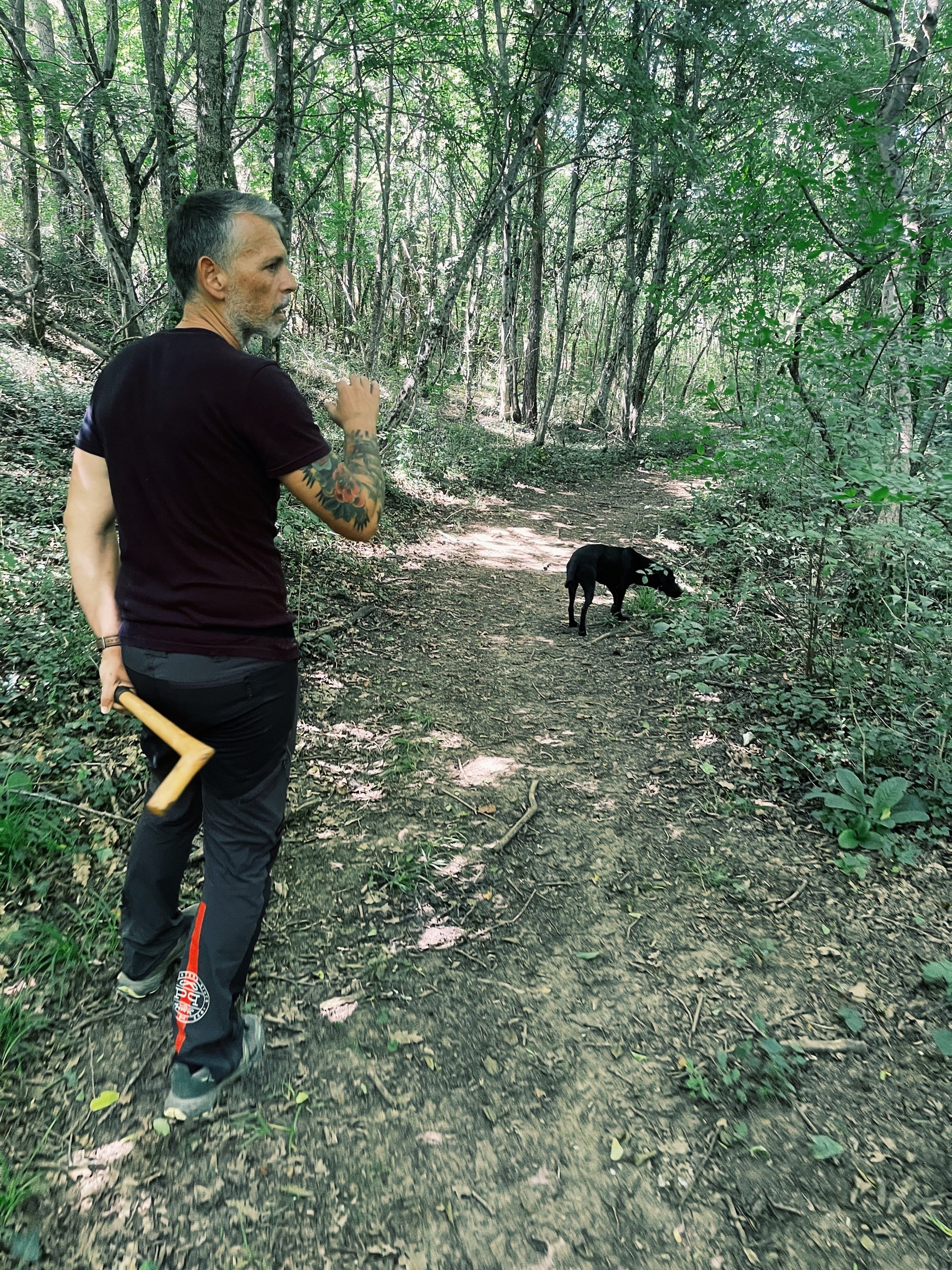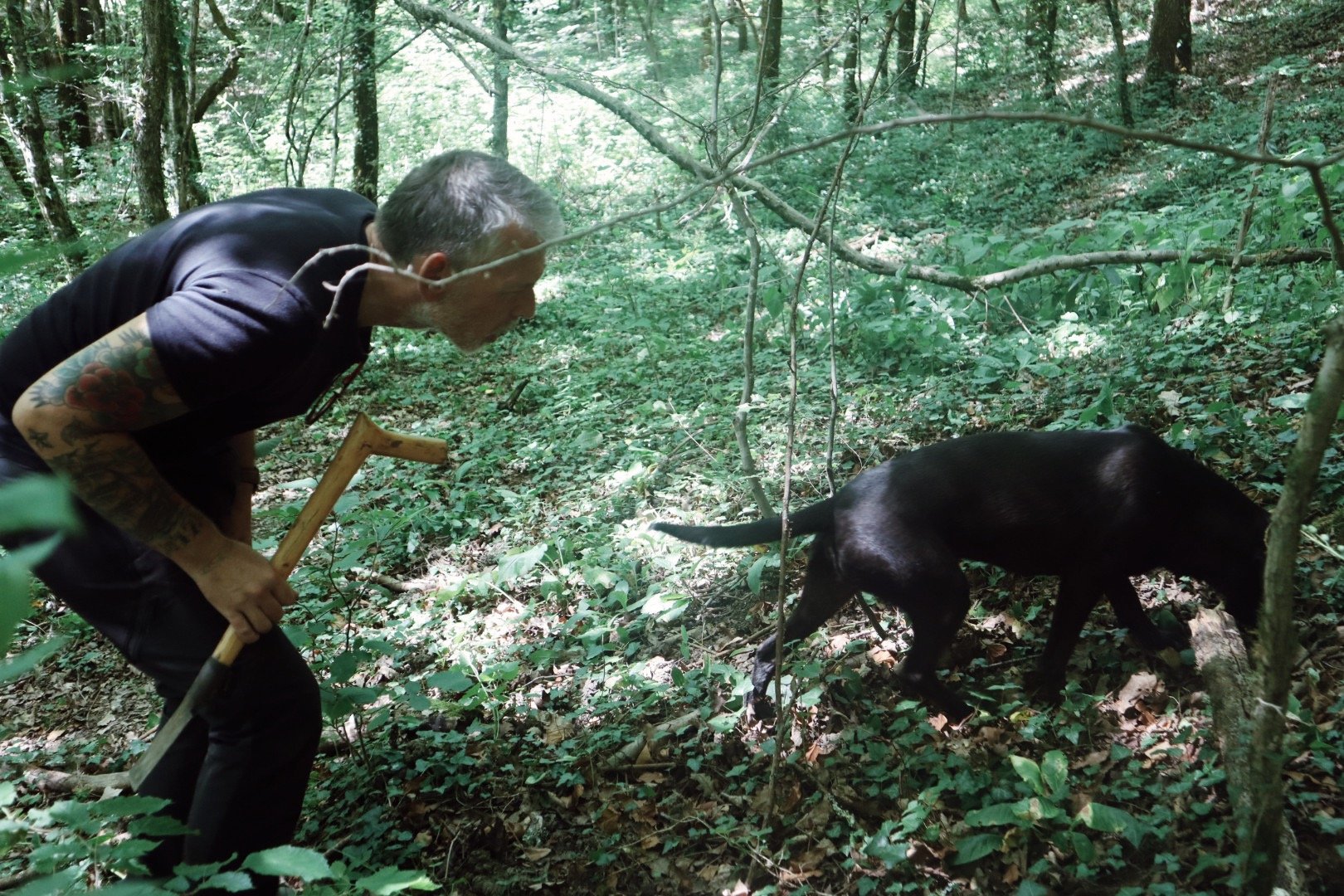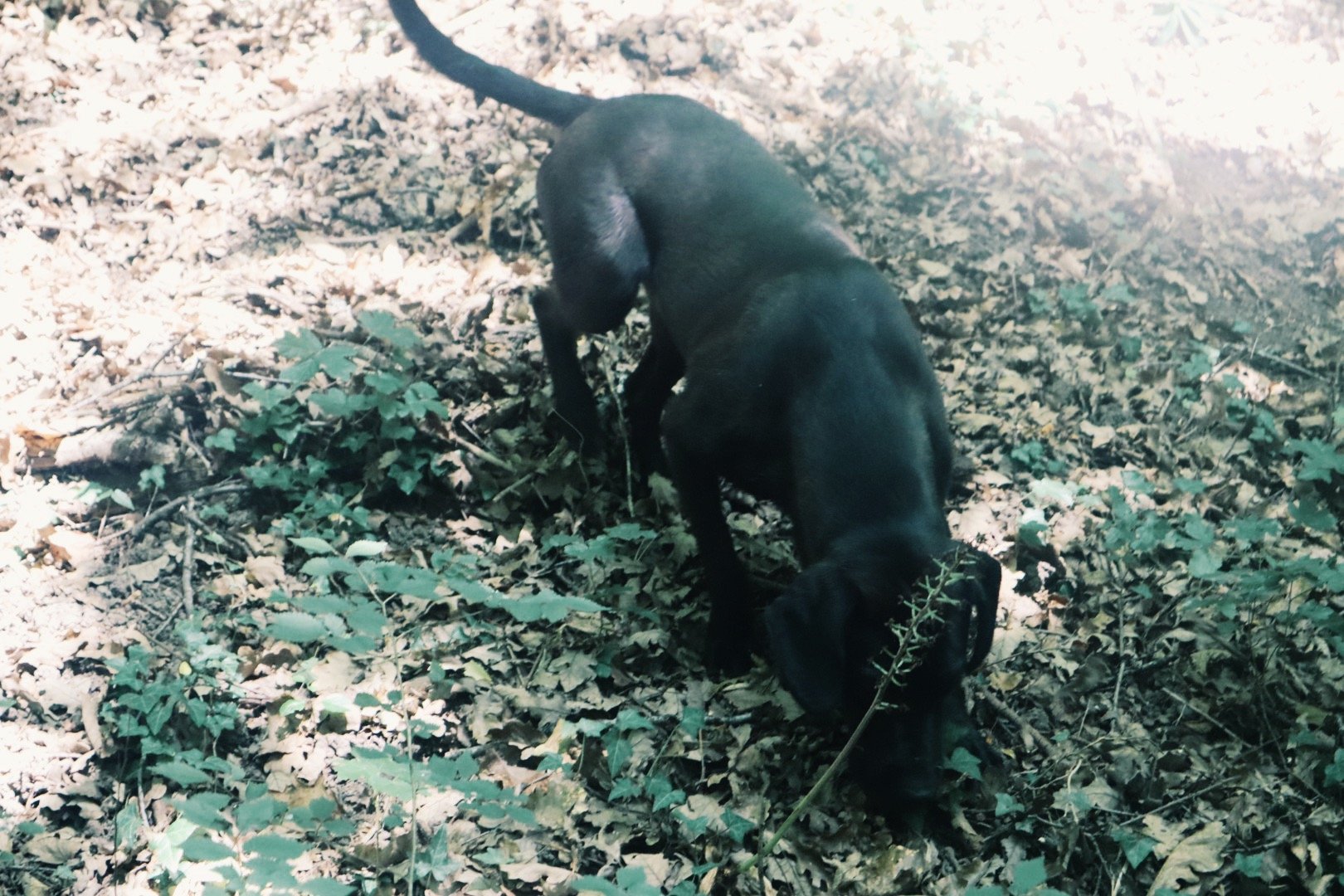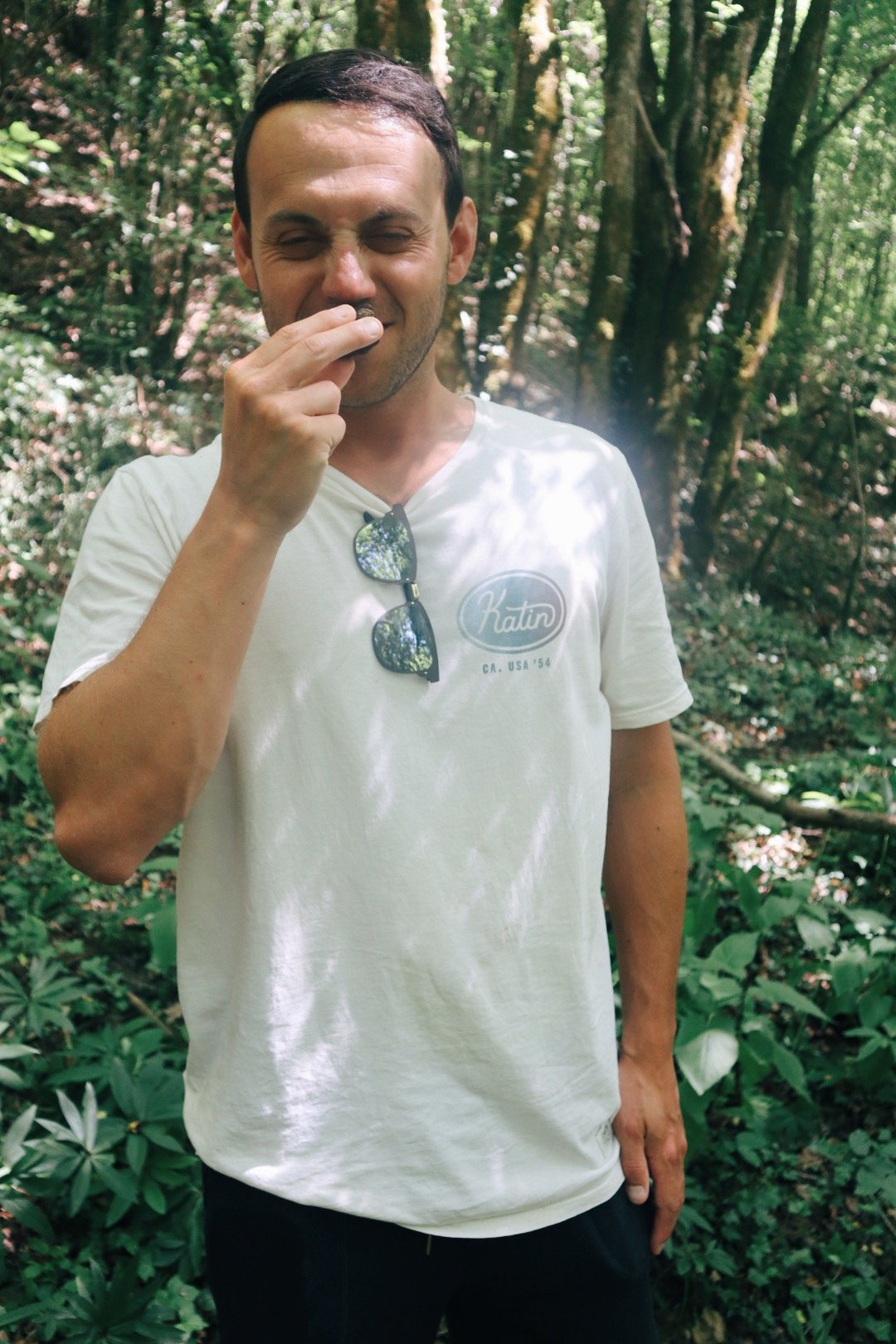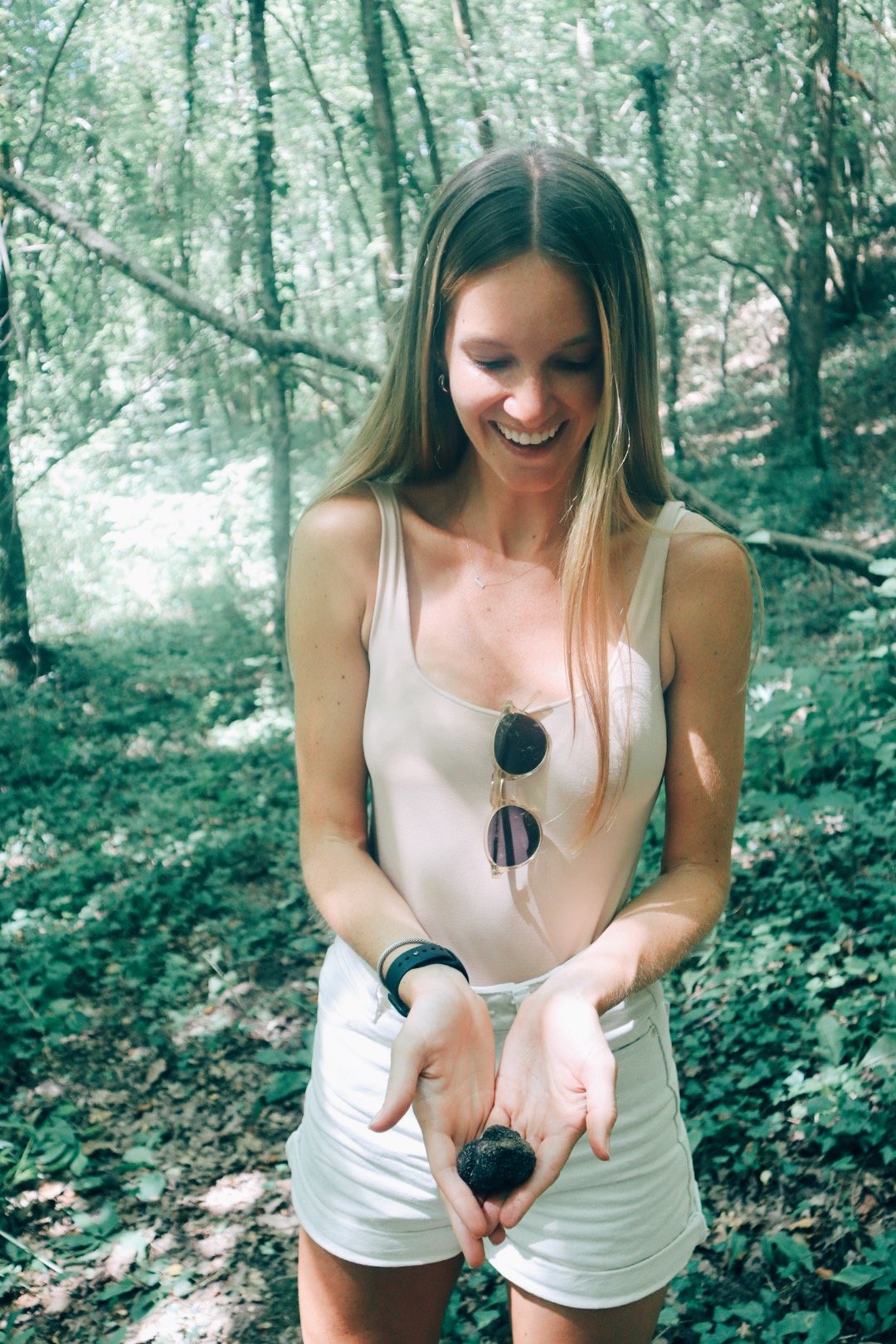It’s Truffle Time
Truffle hunting in Istria, Croatia.
Winding through roads nestled between steep green hillsides, I stared out the window of our car with one thing on my mind - truffles. Istria is Croatia’s truffle capital, and I was surprised to learn that it is one of the only regions in the world where elusive white truffles can be found.
Before coming to Istria, I didn’t know much about truffles. I’ve never been one to add shaved truffles on top of my meal for an extra $15 or scour specialty stores looking for truffle oil. Yet an undeniable shift materialized when we signed up to go truffle hunting in Istria with Pietro & Pietro producers.
We arrived at the producer’s commercial endeavor - Natura Ltd, a chic bistro tucked in the hills just outside the town of Buzet, Croatia. There, we met our guide Davor - a friendly Slovenian resident and avid truffle expert. We were also greeted by Pipo, an energetic black lab who we later learned would be the star of the hunt. Together, the four of us headed out to the Motovun Forrest in an army green Land Rover eager for the hunt.
The hunt
A dense forest slowly came into view and soon we were hidden shadows of the forest in the cool, damp climate. Following closely behind Davor, we watched Pipo make swift movements around tree stumps, small brush piles, and tangling vines. At times Pipo would pause and start to reassess where his smell was leading him. Our guide would start to cheer him with a “C’mon Pipo” and two short whistles, common tactics used to keep the truffle hunter focused. But often this was a short lived charade and Pipo moved on to the next area of land.
As we continued deeper in the forest, stories of the Croatian truffle began to unfold.
The history
Italians first came to the lands in Istria pursuing this rare delicacy, but at that time local farmers had no idea what they were hunting. In fact, they referred to the first uncovered truffles as ‘white potatoes’, not knowing their commercial value abroad.
A variety of factors enable conditions for truffles to grow. Most importantly, the converging roots of five different tree types create the soil needed for the truffle. A mountainous but coastal climate also influence truffle’s earthy development. Lucky for Istria, the Motovun forest is a beautiful blend of all of this, making an ideal conditions for the truffle. This complex ecosystem of unique conditions leads to the exorbitantly high truffle prices (over $1,000 per kg today). Our guide shared the commercial value is more derived from scarcity over anything overly complex about their flavor.
Once discovered, farmers in the area - like Pietro Cerneka - were quick to react. In 1932, the Pietro family bought their first sniffer (aka a truffle sniffing dog) and started a family tradition that would become a calling for their family and passed down six generations.
So why doesn’t Istria get the same international acclaim as the other truffle superstar regions like Piedmont and Veneto? It actually has nothing to do with truffle quality and everything to do with Croatia’s turbulent political past. Truffle hunting in Istria didn’t become legal until the 1990s - after the fall of communism. Truffle production wasn’t labeled as an essential business in communist Yugoslavia, making it illegal for residents to open independent shops and distribute truffles to the rest of the world. However that didn’t stop enterprising entrepreneurs like the Pietro family. They got creative with their capitalistic ventures and smuggled truffles across the Italian border via car - hidden behind tires and under Diesel engines - resembling modern day narcotic smuggling . An enormous risk for a small fungus. This truffle black market was carried out for years until Yugoslavia dissolved in 1992, so Croatian truffles have only recently been ‘officially’ introduced to the world. Since then, global recognition for the truffle has grown and Istria is now a major source for truffles and all associate products.
Today, Pietro & Pietro is a major truffle producer in Croatia and opened up Natura Ltd to showcase the truffle preparations that have been passed down for generations. They purchased a small portion of the Motovun forest and let truffle connoisseurs - Davor and Pipo - hunt for truffles everyday.
As we listened to these captivating stories from Davor, the passion for the land radiated off his words. We felt his sense of pride for the craft and this delicate process. Standing in the middle of this dense forest, 6-ish thousand of miles from home, we began to absorb the excitement of foraging from his words. What was in essence a food treasure hunt for Michael and me, was a passion and career for the foragers, distributers, and chefs of the region.
The discovery
Mid sentence, Davor noticed that Pipo had stopped again. The pup began to circle the area in different paths and our guide was cautiously confident he was on the right track. Within minutes, Pipo started to lightly paw at the ground, a sign of a nearby truffle. Davor was quick to move, later saying that it was important to react quickly so Pipo wouldn’t harm - i.e. eat - the valuable truffle. After some light dusting, a black truffle began to surface from the earth and was methodically removed from its dirt home. Bringing the black truffle up to my nose, I could smell earthy scents of wood and mushroom. The rigid texture felt slightly bumpy and porous.
Pipo was rewarded with a treat and praised for his finding, making him eager to get back out on the hunt. We spent another ten minutes and found one more truffle during our time in the forest. Now it was time to enjoy.
The tasting
A lager beer, brewed with black truffles, awaited our arrival back at Natura, Ltd. We took a seat in the bistro as a woman began to tell us about the process of selling whole truffles and extracting flavors for the oils and sauces that cover the walls of their little bistro.
An array of truffle spreads were accompanied by different truffle cheeses and truffle salami. The infused flavors didn’t overpower any of these bites but instead added a new, earthy dimension. Once we cleaned that plate, Frutija was brought out - a traditional egg dish topped with delicate white truffle shavings. Simply prepared scrambled eggs with parmesan and truffle did sound odd as a delicacy. But it was exceptionally delicious dish that was packed umami with each truffly bite.
Lastly, a spread of dessert cheeses, jams and chocolate was presented with specific instructions of how to eat each provision. As the chocolate melted in the center of my mouth, my tastebuds uncovered the subtle flavor of truffles that blended in with the cocoa. It was the perfect last bite to satisfy our truffle cravings.
Have I become a truffle savant who won’t go a meal without a heaping topping of truffles? Not quite. But I am completely mesmerized by the entire process. Truffle hunting is hard, manual labor that requires extreme patience day in and day out. More than the Frutija or the truffle chocolate, we’ll remember the stories about the generations of truffle hunters who have made a life in Istria bringing this little shaved morsel to plates and palate around the world.

